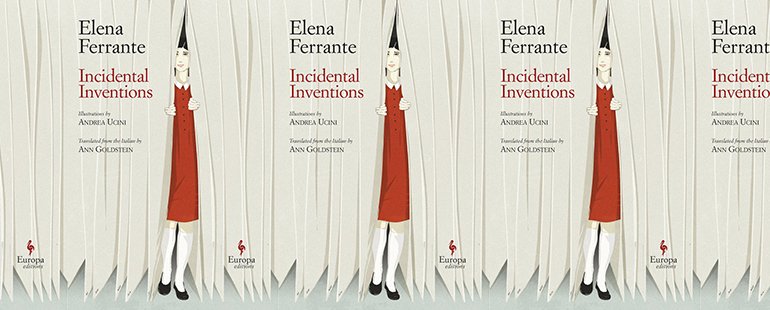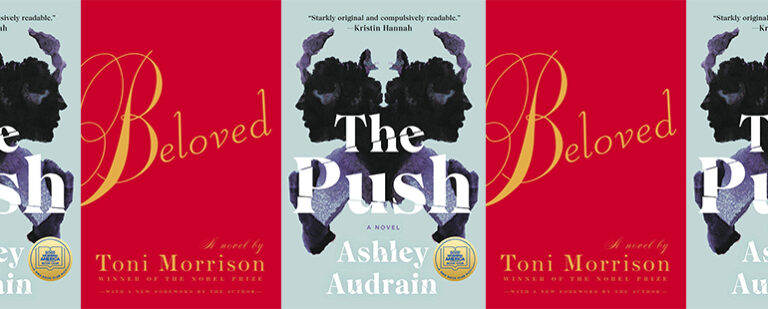Truth and Lies in Elena Ferrante’s Incidental Inventions

For a year beginning in January 2018, Elena Ferrante published a weekly column for the Guardian. Her persona in these columns is personable and charming—quite unlike the narrators of her novels, especially the first three, who tend to engage the world in heightened or deranged states. Yet even in the warm, calm tone of these columns, Ferrante expresses many fears: of “anything that creeps,” heights, elevators, “the very ground we stand on when I imagine that it might split open,” the violence of human beings, her own emotional excesses, and even the project of writing the columns themselves. “I was flattered and at the same time frightened,” she writes in the introduction to Incidental Inventions, a collection of these pieces. “I had no experience with that type of writing, and I was afraid that I wouldn’t be able to do it.” Nevertheless, with guidance from her editors, who suggested the topics of the columns, she took up this new form, characterized by urgency, brevity, and extemporization; Ferrante compares the provisional nature of these writings to the makeshift way “with which we daily react to the world we happen to live in”. Over the course of the series, her commentary on the contingencies of telling both truth and lies shines new light on the relationship between narrative and the frightening reality she has elsewhere called the frantumaglia.
Frantumaglia is the title of a 2016 collection of short nonfiction by Ferrante. In it, she explains that frantumaglia is a word that her mother used to name the “jumble of fragments” inside of her that sometimes “racked” her with “contradictory sensations that were tearing her apart.” The frantumaglia play a role in all of Ferrante’s novels, notably the Neapolitan series, in which Lila, the narrator’s brilliant, ferocious friend, periodically experiences terrifying episodes in which she perceives the fragmentary and chaotic underlying nature of things. Whose view is the “right” view? That of Lenù, the narrator, who invests the time and effort needed to construct a decades long, 1,600-page narrative, or that of Lila’s apparent nihilism? In a New Yorker interview included in Frantumaglia, Ferrante seems to take the side of Lila. “I love unreal things when they show signs of firsthand knowledge of the terror, and hence an awareness that they are unreal, that they will not hold up for long against the collisions,” she says, describing the type of fiction she prefers, which resists the temptation to confirm “that peace and happiness are possible, or that one can return to a private or public Eden.”
Fiction is, of course, by definition an “unreal thing,” but by emphasizing the “incidental” nature of her (nonfictional) columns, Ferrante suggests that whatever truths she arrives at in them are just as “unreal” as the truths arrived at in fiction. In the column “The False and the True,” she explains that indeed, she “can’t trace a line of separation between fiction and nonfiction.” She imagines a scenario in which she attempts to “stick as closely to the facts as possible” in recounting a banal incident in which a friend was briefly locked in a shower:
I read and reread my notes, I look again and again at the video, I listen over and over: and I’m baffled. Why does my friend get muddled when she talks about the defective cubicle? Why are the first well-considered sentences followed by faulty clauses, an accentuation of the dialectal cadence? Why, when she reports to me her trivial experience, does she look insistently to the right? What is there on the right that I can’t see in the recording and didn’t see in reality? How will I work when I move on to the writing? Will I clean up that language? Will I imitate her confusion? Will I lessen the confusion in order to minimise it, will I exaggerate it to make it very obvious? Will I try to hypothesise what’s hidden on the right? And what if nothing is hidden?
After this cascade of questions, Ferrante concludes that the coherence that writing requires, even a coherence that imitates “the lack of order and meaning” in experience, is inevitably artificial, the fiction that inheres in nonfiction.
In Ferrante’s view, then, any narrative, whether factual or fictional, is inherently “unreal” insofar as it imposes a false coherence onto experience, which in itself lacks order and meaning. Meanwhile, her matter-of-fact tone in the columns appears to bring a reassuring quality to such observations—so much so that a reader could forget that her persona and tone are themselves constructs. For example, “The End” concludes, “I don’t know which is better: this adult belief or the belief I maintained until adolescence. Beliefs aren’t good or bad; they serve only to bring order, at least momentarily, to our anguish.” In the introduction to the collection, Ferrante writes that at times in the columns she “came to abrupt conclusions because the space had been used up,” which might explain the sudden tidiness of this ending to a column in which she examines her feelings and views about old age, sickness, death, and religious belief. All the same, given their breezy confidence, these words seem almost comforting. Whether or not beliefs are true, at least they can assuage our anguish.
This use of the word beliefs brings to mind the similar, but chilling, conclusion of Ferrante’s novel The Days of Abandonment, in which the narrator, Olga, describes the relationship she began after a frenzy of rage at her cheating husband—rage that propels her through the action of most of the novel—subsided: “He was trying to communicate silently that, through his mysterious gift, he knew how to make meaning stronger, to invent a feeling of fullness and joy. I pretended to believe him and so we loved each other for a long time, in the days and months to come, quietly.” Olga’s pretense of belief seems to call into question the reality of the love she claims to have found. But, considering Ferrante’s claim that beliefs “aren’t good or bad,” perhaps Olga’s pretense of belief is not cynical, but the only true faith possible, and her love a real enough way to assuage her anguish.
Or is this reading in which words like reassuring and faith appear in fact a misreading, an attempt to find or establish some kind of Eden that Ferrante would deny? After all, the other column that brings to mind Olga and her pretense of belief is “Love Forever,” in which an old friend of Ferrante’s “who has been married for exactly forty-eight years, to a good man” enumerates the ways to maintain love, including:
you have to immediately look the other way when your fidelity is casually repaid with betrayal, and meanwhile hope at least to be betrayed with discretion, just as you will surely do as soon as you observe that being faithful earns you nothing but humiliation. Fifth, you have to repress the desire to break everything and leave, to persuade yourself that the children need a father, even when he’s terrible, that growing old in solitude is far worse than growing old together, and that becoming adult means accepting life as it is—that is to say, repugnant. Sixth, you have to believe, finally, that loving—loving with your feet on the ground, not what you imagined as a girl—is a skilful juggling exercise, a permanent sacrifice, elegantly swallowing a bitter pill.
This unnamed friend seems to be experiencing the same rage that leads Olga, midway through The Days of Abandonment, to beat her husband when she encounters him in public with his mistress. Unlike Olga, however, Ferrante’s friend refuses to acknowledge her rage. Asked if her marriage has lasted so long because “this is what you and your husband did,” she immediately disavows her own words, claiming that she and her husband have been “fortunate” and “love each other deeply.”
Which is the truth? Is the friend’s love for her husband deep and fortunate, or is it a bitter pill? Ferrante implies the latter but does not press her friend further. As she writes in a column titled “Lies” (in which she says she indulged and often delighted in lies as a child), some lies “give us a little respite” in a world “full of traps and humiliations”; and so Ferrante allows her friend the respite of the lie. The respite that such a lie offers, though, may be costly. Insofar as the friend fails to face her suffering, she perpetuates that suffering. As Ferrante writes in “Clean Breaks,” to be silent about suffering is a mistake: “The anaesthetic doesn’t cancel out the wound.”
Ferrante herself, of course, chooses to construct narratives that address the traps and humiliations of life. As she writes in a column titled “Digging”:
I have to say that I write with greater dedication when I start digging into common, I would almost say trite, situations and feelings, and insist on expressing everything that—out of habit, to keep the peace—we tend to be silent about […] I’m interested in the ordinary or, rather, what we have forced inside the uniform of the ordinary. I’m interested in digging into that and causing confusion, pushing myself to go beyond appearances.
Instead of the “aesthetics of reticence,” Ferrante gives us the aesthetics of trouble and excess, even in these short, tidy-seeming essays. As they make clear, one need not travel down the Congo River to encounter “the horror”; it is right here with us in our homes, in our relationships with our traitorous husbands, within ourselves, even within the roots of our houseplants. “Their expansion worries me,” Ferrante writes. “They are prisoners and yet they extend, twist, creep their way in, break the stone. Their roots grow deeper and deeper; they try to send them elsewhere.” Yet she cultivates plants and loves them—possibly more than cats, she says, which she adores. One must live with the frantumaglia anyway; why not acknowledge it, make of it what one can, whether it be a story or a flower?


